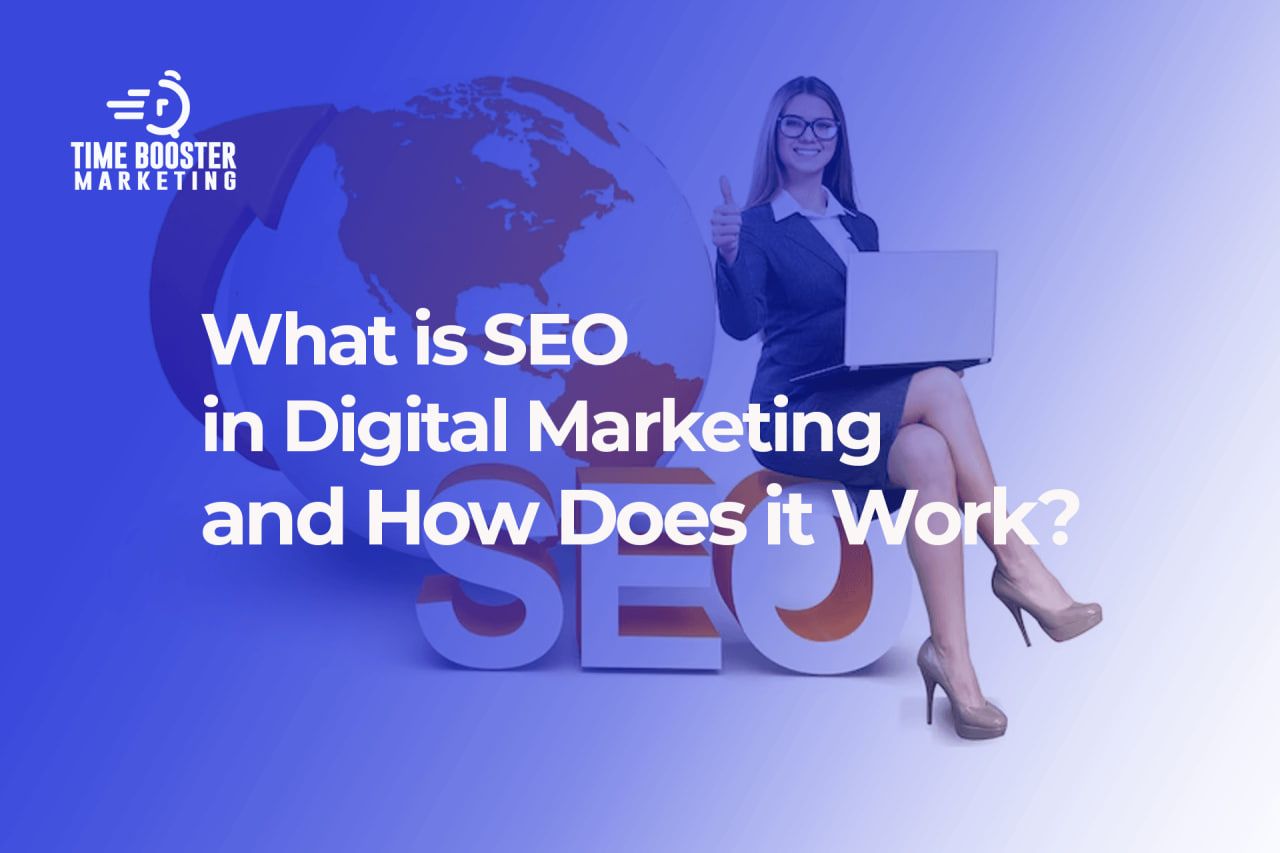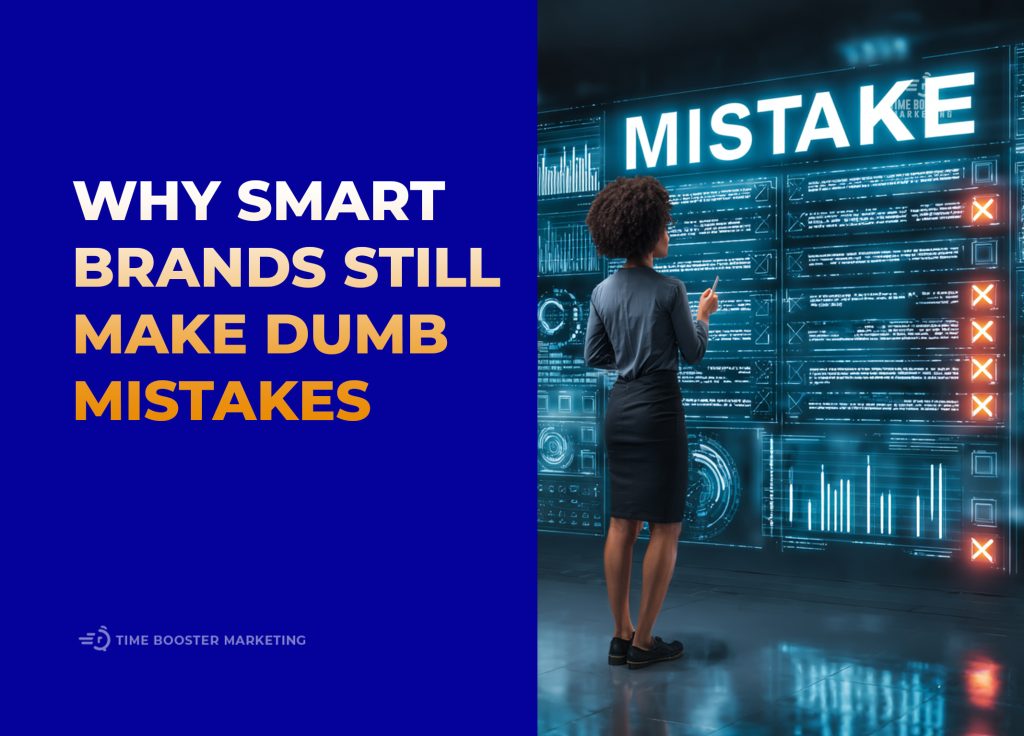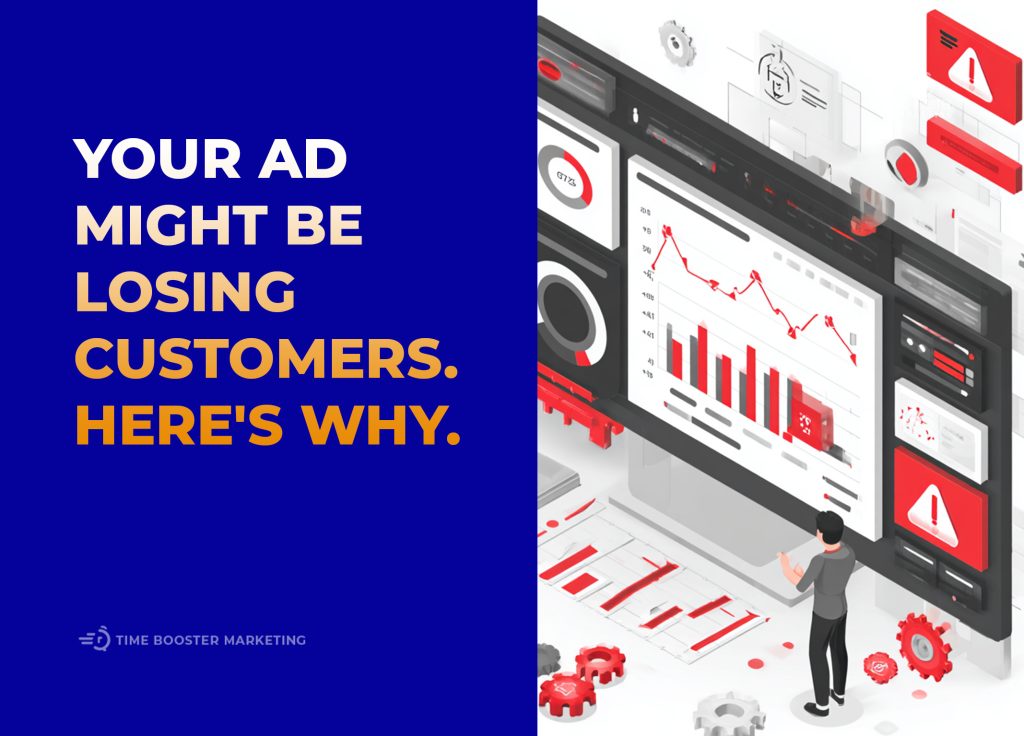SEO in digital marketing is no longer just about keywords and backlinks; it’s a strategic tool for Black-owned businesses seeking visibility, credibility, and growth. In 2025, mastering SEO means embracing AI search, Core Web Vitals, mobile-first indexing, and structured data, while addressing the unique challenges Black businesses often face online.
We are in an era where information flows ceaselessly, and businesses strive to be seen and heard by their target audience. This is where Search Engine Optimization (SEO) comes into play. SEO is the driving force behind achieving better visibility on search engines, especially the giant of them all – Google. In this article, we will delve deep into the world of SEO, covering everything from its fundamentals to setting objectives for different types of businesses.
What is SEO in Digital Marketing?
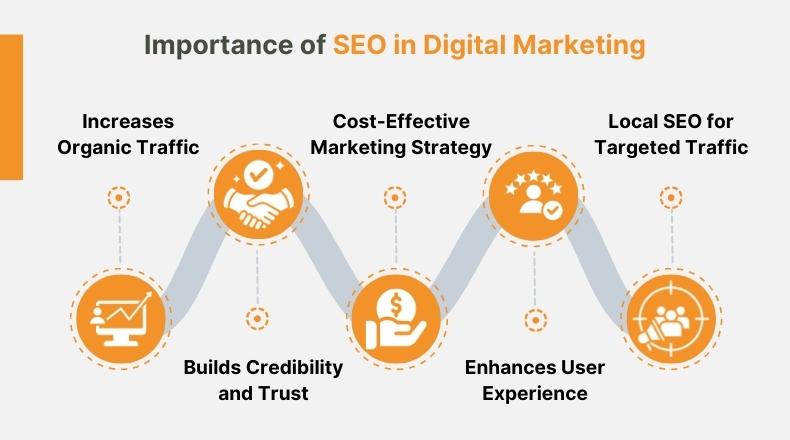
SEO is the practice of optimizing your website and online content to improve its visibility and ranking on search engines like Google, Bing, or Yahoo. It involves various techniques and strategies to make your website more appealing to search engines and, in turn, more accessible to potential visitors.
At its core, SEO is a digital marketing strategy designed to enhance a website’s visibility on search engine results pages (SERPs). Its ultimate goal is to make your website appear higher in search engine results drive more organic traffic to a website, thus increasing its chances of conversion.
How Search Engines Work
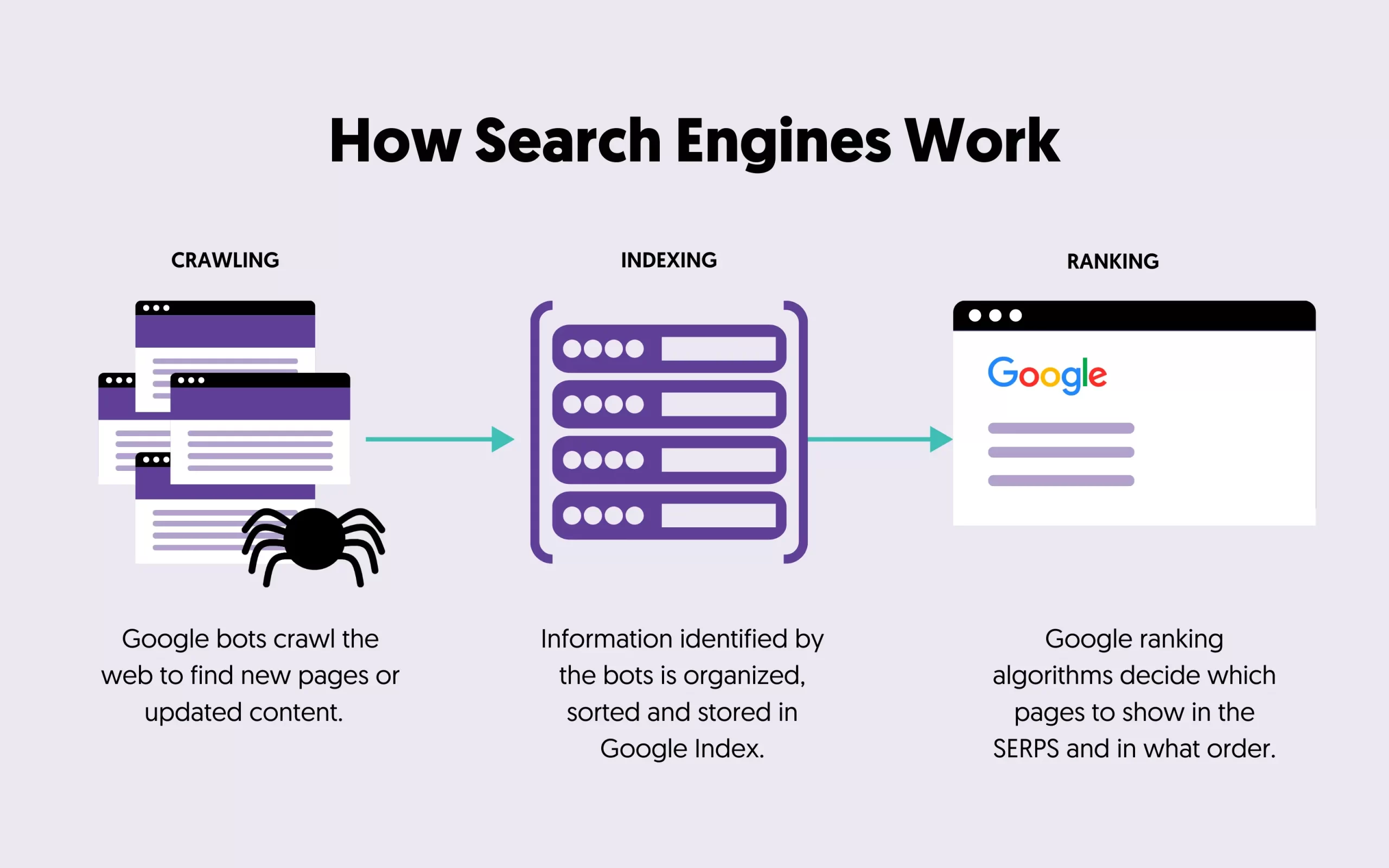
Before diving into the real world of SEO, it’s essential to understand how search engines operate. Search engines, like Google, use well developed algorithms to search and index web pages. When a user enters a search query (keyword), the engine’s algorithm processes it and returns relevant results from its index. The first organic search result on Google receives about 32% of clicks, emphasizing the importance of ranking at the top.
These algorithms take into account a multitude of factors, including keywords, content quality, user experience, and website authority, to determine which pages should be displayed in what order. SEO aims to align a website with these algorithms to improve its chances of ranking higher on the Search Engine Results Pages (SERPs).
How Does SEO in digital marketing Work?
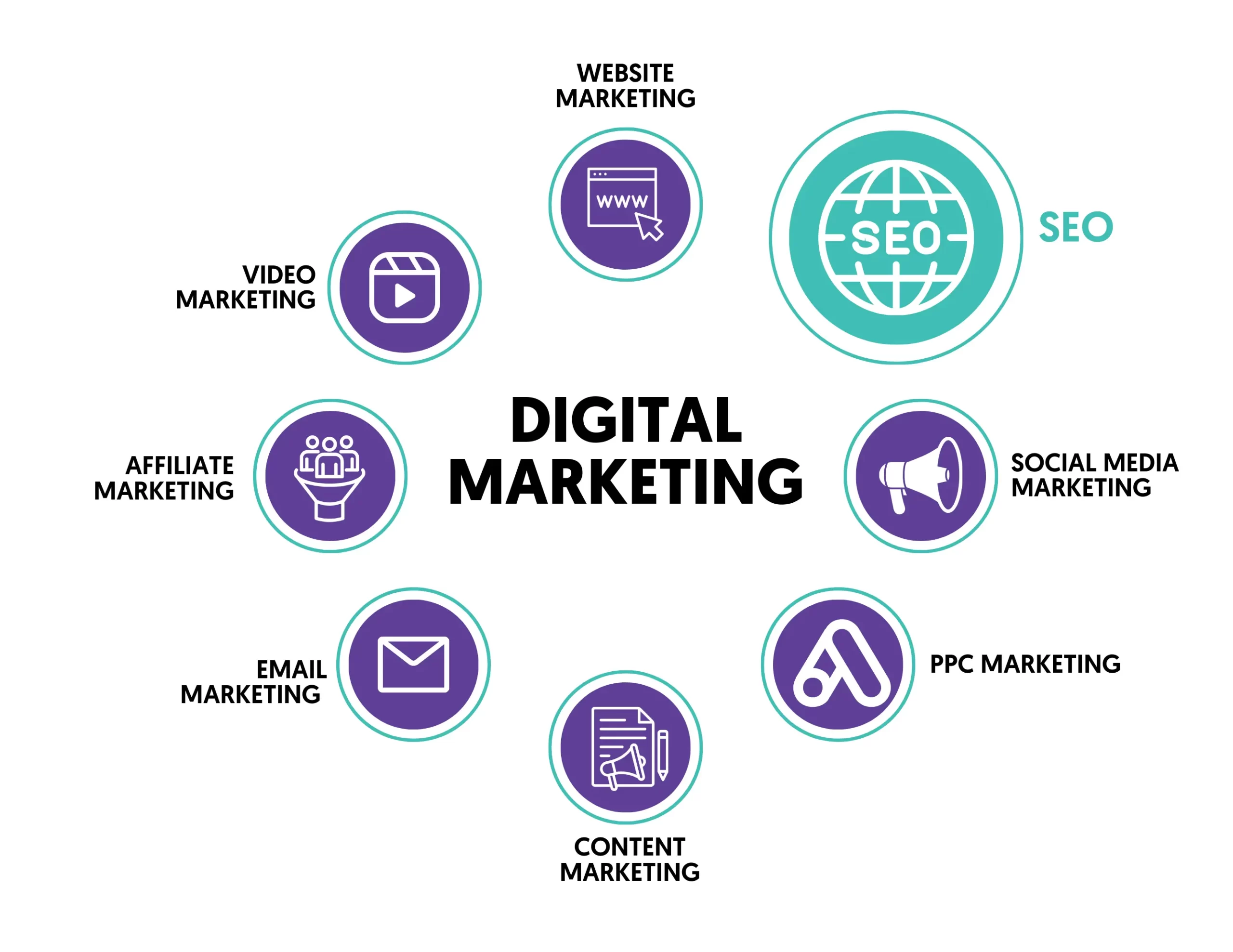
SEO works by improving different aspects of your website to make it easier for search engines to understand and rank it higher in search results. Here’s how it works:
To improve your website’s visibility in search engines, you can optimize it for specific keywords and phrases related to your business. You can also submit your website’s URLs to search engines so that they can be indexed and ranked.
Keywords are the words and phrases your target audience searches for online. For example, if you sell cupcakes online, your audience may search using keywords like “delicious cupcakes”.
Your website should also have high-quality, informative, and relevant content that matches what people are looking for.
With the case of cupcakes, you can create a blog post on “How to make Delicious cupcakes”. In the blog post, you can include mouth-watering images of your cupcakes, and ensure your website loads quickly and has mobile friendliness (works well on mobile devices). This will become more appealing to a search engines like Google, and more likely that Google will recommend your bakery’s website to someone searching for cupcakes.
You can also include backlinks for more ranking and visibility. Backlinks are like votes of confidence from other websites. If reputable websites link to your content, it tells search engines that your content is trustworthy and valuable.
Why SEO Focuses on Google
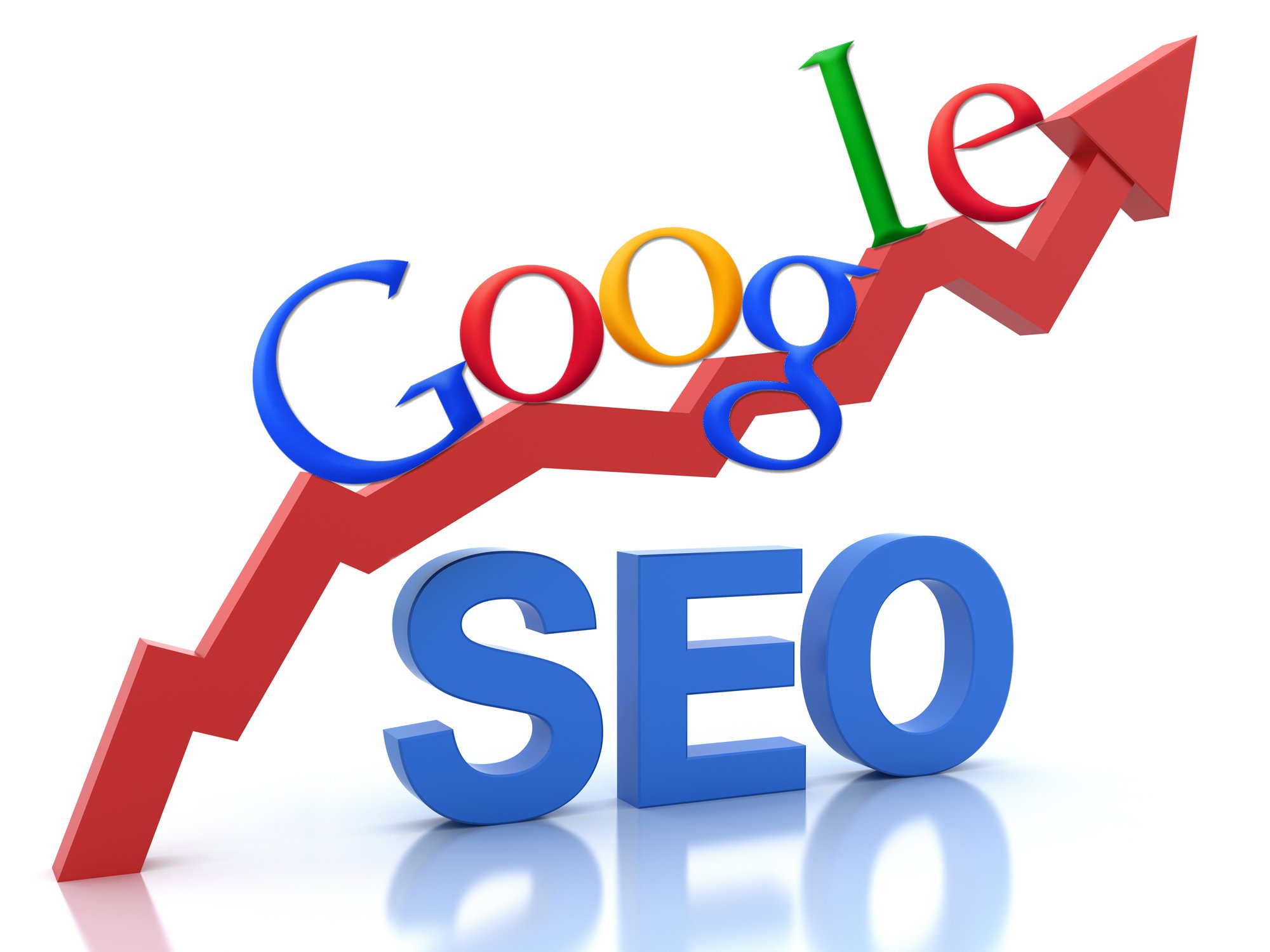
While there are several search engines in existence, Google remains the undisputed leader. As of September 2021, Google had an outstanding 92.51% market share in the global search engine market. This dominance makes it the primary focus for most SEO efforts.
Optimizing for Google not only improves a website’s visibility but also ensures that it reaches the widest possible audience. Therefore, when we discuss SEO, it’s often definitely referring to optimizing for Google, though similar principles apply to other search engines.
The Advantages of SEO in Digital Marketing
Search Engine Optimization (SEO) is a crucial component of digital marketing with numerous benefits. Here are some of the key advantages of incorporating SEO into your digital marketing strategy for your business:
- Cost-Effective: Compared to paid advertising, SEO is a cost-effective strategy because you don’t need to pay for clicks or impressions. Once your website ranks well, you can continue to attract traffic without ongoing ad spend.
- Better Conversion Rates: Targeted traffic and improved user experience can lead to higher conversion rates. When users find what they are looking for easily on your website, they are more likely to take desired actions, such as making a purchase or filling out a contact form.
- Competitive Advantage: SEO is a standard practice in the digital marketing. By investing in SEO, you can stay competitive in your industry and potentially outrank competitors in search results. Meaning you can boost your credibility as an expert in your field to outshine your competitors and attract new customers.
- Increase website traffic: SEO helps improve your website’s visibility in search engine results pages (SERPs), leading to more organic (non-paid) traffic. This can result in a consistent flow of visitors to your website.
Types of SEO

SEO can be broadly categorized into three types:
- On-Page SEO: On-page SEO refers to optimizing the content and elements on a website’s individual pages to make them more search engine-friendly. It helps search engines and users to know what your page is all about. This includes optimizing meta tags (title tags, meta descriptions), using relevant keywords, improving content quality, ensuring proper HTML markup, and optimizing images.
- Off-Page SEO: Off-page SEO involves strategies and activities that take place outside of your website to improve its authority and reputation in the eyes of search engines. This often includes link building, social media marketing, influencer outreach, and online PR to build high-quality backlinks and mentions.
- Technical SEO: Technical SEO focuses on optimizing the technical aspects of a website to make it easier for search engines to crawl and index. It includes tasks such as improving site speed, ensuring mobile-friendliness, fixing broken links, creating an XML sitemap, and optimizing site architecture.
- Local SEO: Local SEO focuses on optimizing your business presence so that it appears in search results for location-based queries. For Black-owned businesses, this means making it easier for customers in your community to find and engage with your products or services.
Differences Between paid and organic search

Paid search and organic search are two distinct strategies for gaining visibility on search engines:
Paid Search (PPC – Pay-Per-Click):
- Involves bidding for ad placement on SERPs.
- Provides immediate visibility but at a cost per click.
- Advertisers set daily budgets.
- Results are marked as ads.
- Campaigns can be highly targeted.
Organic Search (SEO):
- Involves optimizing web pages for higher rankings without paying per click.
- Takes time to see results.
- No direct cost per click.
- Results are displayed below paid ads.
- Relies on the quality of content and technical optimization.
While both strategies have their merits, SEO offers long-term sustainability, while paid search delivers immediate results but at a continuous cost.
Setting SEO Objectives for Different Types of Businesses
Think of SEO objectives like destination points on a map. Just as you would plan a road trip differently depending on whether you are going to the beach, the mountains, or a city, businesses have unique SEO goals based on what they want to achieve online. Here are some simple examples:
- E-commerce Websites: Imagine you’re running an online store that sells fashionable clothing. Your SEO objective might be to ‘Increase online sales by 20% in the next six months. To achieve this, you would focus on optimizing product pages, improving the checkout process, and using targeted keywords to attract potential customers looking for stylish attire.
- Local Businesses: Picture a cozy coffee shop in your neighborhood. Your SEO goal could be to ‘Attract more local customers and increase foot traffic.‘ To achieve this, you would optimize your Google My Business listing with accurate opening hours, post regular updates about your delicious brews, and encourage customers to leave reviews to boost your visibility in local searches.
- B2B Companies: Now, think of a software company selling specialized business software. Your SEO objective might be ‘Generate high-quality leads from corporate decision-makers.’ To accomplish this, you’d create in-depth whitepapers and case studies that showcase the benefits of your software, optimize your website for keywords relevant to your industry, and build authoritative backlinks from reputable business publication
- Content Publishers: Let’s assume you run a blog covering travel adventures. Your SEO goal could be ‘Increase readership and engagement.’ To achieve this, you would plan a content calendar with exciting travel stories, use social media to share your articles, and interact with your audience by responding to comments and questions on your blog posts.
So, just like planning a road trip, setting the right SEO objectives for your business helps you navigate the online world effectively and reach your desired destination.
How is SEO different from SEM and PPC?
According to Search Engine Journal, SEM and PPC are two other common terms you will read about often here on Search Engine Land and hear about in the larger search marketing community.
It can also be helpful to distinguish what SEO is from what it is not.
Here, we’ll explain the difference in terminologies, what these abbreviations mean and how they extend to different disciplines.
SEO vs. SEM
SEM stands for search engine marketing – or, as it is more commonly known, search marketing.
Search marketing is a type of digital marketing. It is an umbrella term for the combination of SEO and PPC (pay-per-click, e.g. Google Ads) activities that drive traffic via organic search and paid search, respectively.
So how do SEO and SEM differ? Technically they aren’t different – SEO is simply one-half of SEM:
- SEO: Driving organic results clicks from search engines.
- SEM: Driving organic and paid results clicks from search engines.
- PPC: Driving paid results clicks from search engines.
Here’s the best way to think about SEM, SEO and PPC:
Imagine SEM is a coin. SEO is one side of that coin. PPC is on the flip side.
SEO vs. PPC
PPC: stands for pay-per-click – a type of digital marketing where advertisers are charged whenever one of their ads gets clicked on.
Advertisers bid on specific keywords or phrases that they want their ads to appear for in the search engine results.
When a user searches for one of those keywords or phrases, the advertiser’s ad (paid listing) will appear among the top results.
So again, if we think of search marketing as a coin, SEO and PPC are two sides of the same coin:
- With PPC, the advertiser pays when a search user clicks their paid listing.
- With SEO the search result listing has not been directly paid for, though SEO is sold as a service and the process of optimizing pages and websites takes time and investment, so it is important to understand that organic search isn’t “free.”
Some people have debated “SEO vs. PPC” – which channel is more valuable or has a better return on investment (ROI). However, SEO and PPC are complementary digital marketing channels. Ideally, you should always choose both (as long as your budget allows it).
As we mentioned before, the terms SEM and PPC are used within the industry interchangeably. However, that isn’t the case here on Search Engine Land.
Whenever we mention “SEM,” it will be because we’re referring to both SEO (organic search) and PPC (paid search).
Search Engine Optimization is a dynamic field that is crucial for online success today. Understanding the fundamentals of SEO, how search engines work, and what Google expects from websites is essential for crafting effective SEO strategies. The three pillars of SEO, along with a clear understanding of the differences between paid and organic search, help businesses achieve their online visibility goals.

